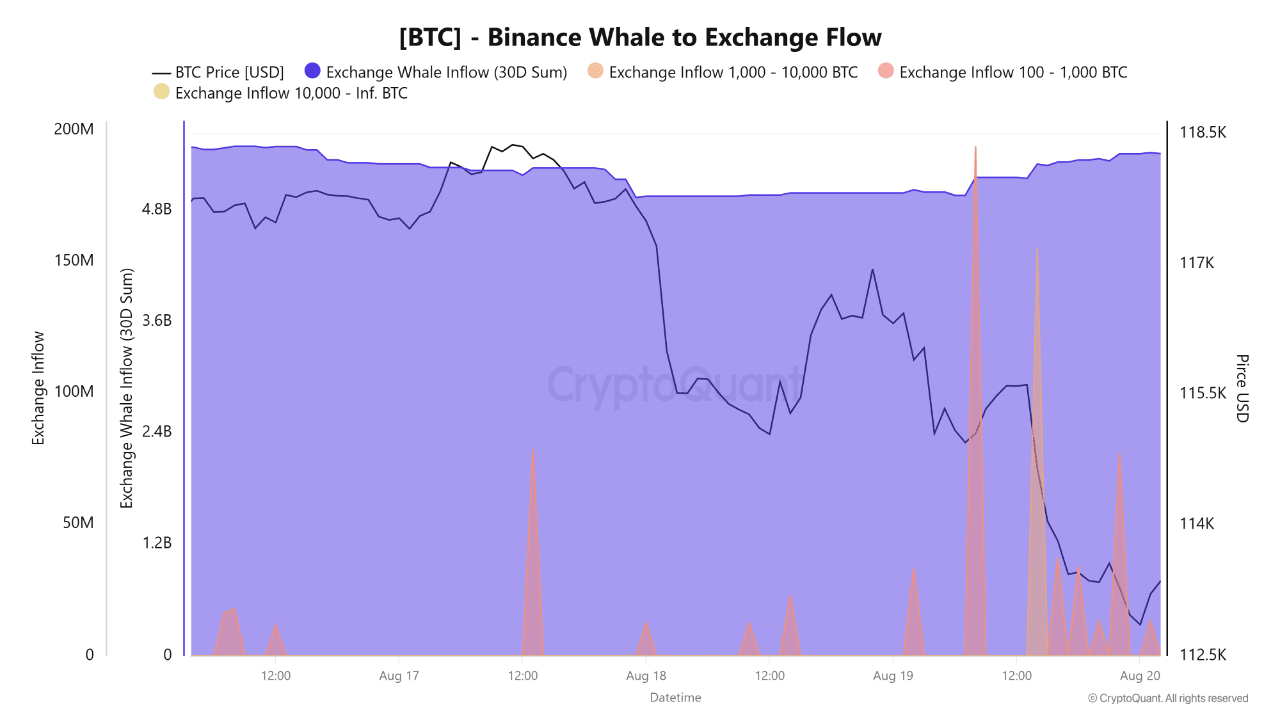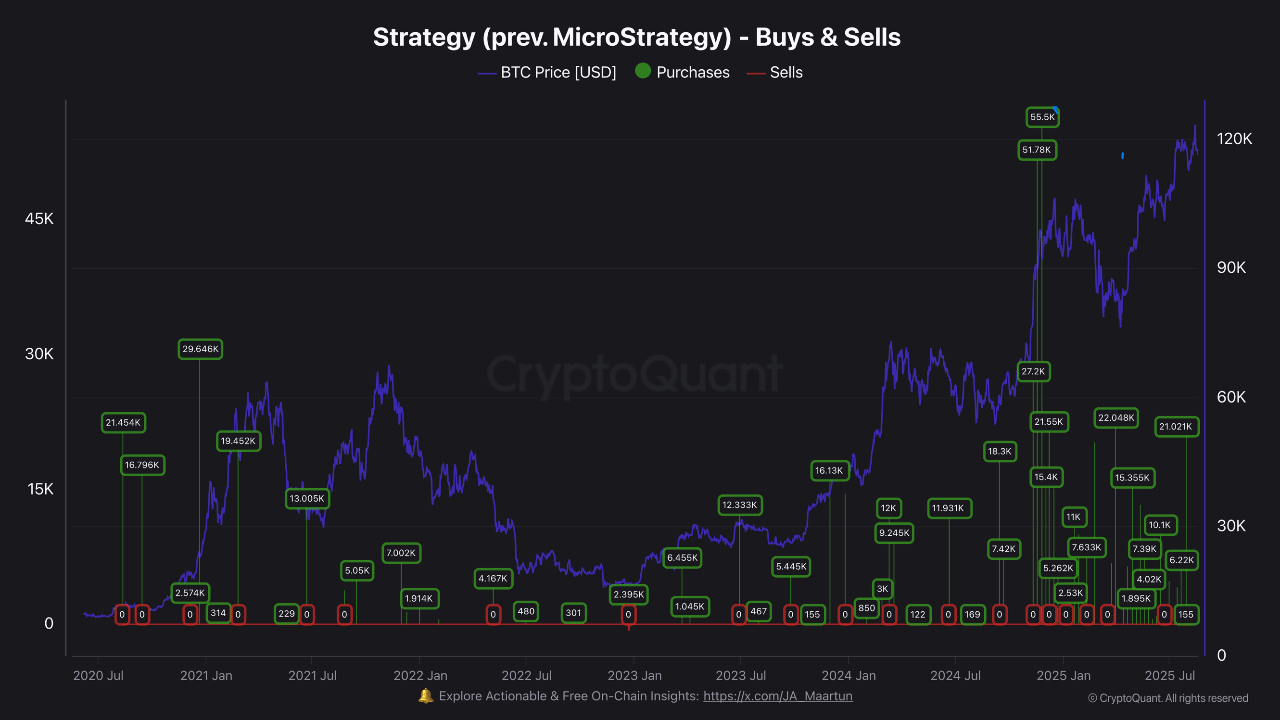Bitcoin has retreated after reaching a record high of $124,000 last week, declining by more than 8% in recent days. At the time of writing, the world's largest cryptocurrency is trading around $113,355, reflecting a 7% drop over the past seven days.
This adjustment period has raised many questions about the motivations behind the current market trend, particularly the role of 'whales' – investors holding large amounts of BTC – in shaping the price trajectory.
Whale's strategic selling activity on Binance
According to on-chain data, whales have intensified their selling through Binance – the world's largest exchange by trading volume. Arab Chain, a contributor to CryptoQuant, notes that these moves are not random but rather a deliberate distribution strategy, as whales gradually push BTC into the market at strong resistance levels.
Data shows a series of transactions sending between 100–1,000 BTC to Binance, repeated multiple times instead of large orders over 10,000 BTC. This pattern is described by Arab Chain as 'coordinated distribution', aimed at optimizing profits and minimizing strong shocks to the price.
The recent drop to around $112,500 coincided with an increase in whale capital flowing into Binance. This reinforces the view that large investors are gradually selling at key resistance areas, specifically in the $118,000–$120,000 range, rather than making sudden sell-offs that cause strong volatility.

Short-term pressure and important support areas
Despite the evident selling activity, Arab Chain also points out that the 30-day accumulation capital flow index of whales remains stable around $4.8 billion. This indicates that the long-term accumulation trend has not been broken.
However, from a short-term perspective, selling pressure remains significant. Every time Bitcoin attempts to recover, data records an increase in the amount of BTC sent by whales to exchanges, thereby reinforcing the sell-off momentum. If this trend continues without a sufficiently strong new buying force appearing, Arab Chain warns that Bitcoin could decline further, potentially testing the important support area around $110,000.
Institutions quietly accumulating
While whales are dominating the short-term price rhythm, another force – financial institutions – is quietly shaping the long-term foundation for Bitcoin. According to IT Tech, a contributor to CryptoQuant, institutions continue to persistently apply DCA (dollar-cost averaging) strategies through OTC trades and on-chain payment channels. However, he notes that these capital flows do not always create an immediate impact on price volatility.

Instead, to better understand market sentiment and positioning, IT Tech emphasizes the necessity of monitoring a range of other important indicators, including Bitcoin ETF capital flows – reflecting the interest level of institutional investors, accumulated spot volume differential (CVD) – indicating supply-demand balance, and transaction fees on major exchanges like Coinbase, which reflect changes in actual trading behavior. These metrics, when combined, will provide a more comprehensive view of market health and Bitcoin's ability to maintain its trend.
The current Bitcoin market reflects a clear tug-of-war between two key forces: on one side are the 'whales' consistently executing tactical sales on exchanges, creating short-term price adjustment pressure; on the other side are financial institutions quietly accumulating, gradually solidifying the long-term demand foundation for Bitcoin. The interaction between these two opposing trends makes the market picture complex and unpredictable: selling pressure could drive the price lower, while institutional capital continues to provide support.
This fragile balance will determine whether Bitcoin can hold steady around the $113,000 – $115,000 mark or slide deeper below $110,000. For investors, the current challenge is not only to monitor daily price fluctuations but also to grasp institutional capital flows along with key on-chain indicators to gain a comprehensive view and accurately determine the market direction.